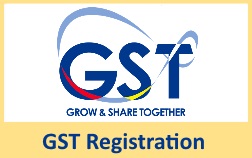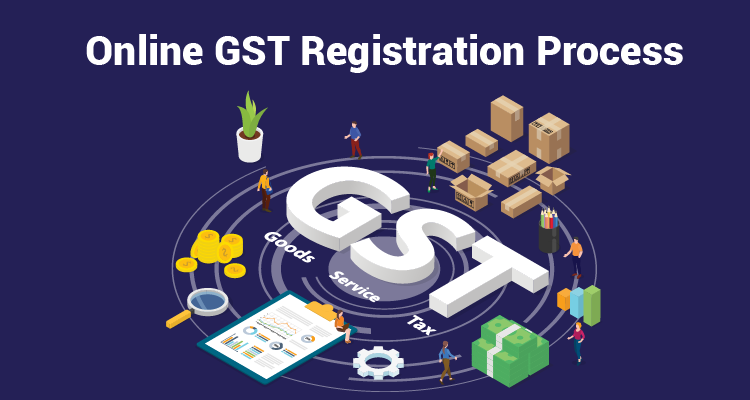Browsing the Complexities of GST Enrollment: Expert Tips to Make Sure a Smooth and Successful Enrollment
Browsing the detailed landscape of GST registration can be an overwhelming job for organizations aiming to comply with regulatory needs. By discovering the usual challenges and vital components linked with GST registration, companies can furnish themselves with the understanding required to browse this complex terrain efficiently.
Recognizing GST Enrollment Process
Navigating with the intricacies of the GST enrollment procedure calls for a thorough understanding of the documentation and needs involved. The procedure begins by determining whether a business is eligible for GST enrollment based on variables such as annual turn over, interstate transactions, and the kind of goods or solutions offered. When qualification is developed, the next action is to gather the required papers, consisting of proof of service consolidation, identification and address evidence of the promoters, bank statements, and economic declarations. These files play an important duty in confirming the information given in the enrollment application.
Moreover, it is vital to guarantee that all details gone into in the application are exact and approximately day, as any kind of disparities may lead to delays or denial of the enrollment. Understanding the various GST kinds and their specific usages is likewise essential in completing the enrollment process smoothly. By acquainting oneself with these requirements and remaining organized throughout the application process, businesses can navigate the GST enrollment procedure efficiently and successfully.
Vital Paperwork for Enrollment
In order to effectively complete the GST enrollment procedure, organizations need to collect and send essential paperwork that confirms their eligibility and sustains the details offered in the application. The key records required for GST registration generally include evidence of business unification or address, identification and registration evidence of the key local business owner or companions, bank account declarations, business PAN card, and evidence of company address such as utility expenses or rent agreement.

Ensuring that all needed documentation is exact, as much as day, and in the suggested layout is critical to prevent delays or issues during the GST enrollment procedure. Companies need to carefully review the paper requirements outlined by the tax obligation authorities to assist in a smooth and successful enrollment.
Usual Mistakes to Avoid
An important element of the GST registration procedure entails guiding clear of usual errors that can restrain the smooth completion of registration for businesses. Mistakes in details such as the business address, frying pan, or name can lead to hold-ups in the enrollment process.
One more typical error is not recognizing the threshold for enrollment. Businesses should sign up for GST if their yearly turnover exceeds the suggested restriction, falling short which can result in fines and legal effects (Simplify your GST registration process with our expert services in Singapore). It is essential for services to remain notified concerning the registration requirements and target dates to prevent non-compliance problems.
Additionally, some businesses neglect the importance of prompt entry of registration papers. Delays in sending necessary kinds and files can extend the enrollment process needlessly. To avoid this, organizations need to develop a timeline for event and submitting all required paperwork without delay. By preventing these common challenges, businesses can browse the GST registration try these out procedure effectively and ensure conformity with the tax policies.
Optimizing Input Tax Obligation Credit Score Conveniences

Companies must also frequently resolve their purchases with the auto-generated input tax obligation credit scores offered on the GST portal to identify any kind of disparities and correct them immediately. It is suggested to conduct routine testimonials of input tax obligation credit report declares to guarantee compliance with GST regulations and regulations. By faithfully complying with these practices, businesses can maximize their input tax obligation credit history advantages, boost their lower line, and remain compliant with GST needs.
Specialist Tips for Smooth Registration
Smooth registration under the GST program begins with meticulous focus to information in guaranteeing all required documents and info are ready accurately and in conformity with governing needs. To start the registration process effortlessly, businesses ought to first ascertain their qualification for GST enrollment based upon turnover and company activities. It is critical to gather and arrange essential papers such as PAN card, proof of service registration, address and identification evidence of marketers, bank declarations, and business-specific records like rental arrangements or energy bills for the facilities. Guaranteeing that all info offered is consistent across documents can stop hold-ups or rejections throughout the registration process. In addition, verifying the precision of information entered in the GST enrollment application is paramount. Any errors or inconsistencies could lead to issues in the future. Seeking professional support or utilizing online resources offered by the tax authorities can also help in a smoother enrollment procedure, aiding companies prevent typical mistakes and browse the complexities of GST enrollment continue reading this easily.

Conclusion
Finally, navigating the intricacies of GST enrollment requires an extensive understanding of the procedure, important documentation, typical challenges to avoid, and strategies to maximize input tax obligation debt advantages. By complying with specialist pointers and guidelines, organizations can make sure a smooth and successful enrollment process, ultimately leading to conformity with GST laws and making best use of tax advantages.
By acquainting oneself with these requirements and remaining organized throughout the application process, services can navigate the GST enrollment process effectively and efficiently.
A crucial facet of the GST enrollment procedure involves steering clear of usual mistakes that can restrain the smooth conclusion of registration for services. By staying clear of these usual challenges, organizations can browse the GST registration procedure effectively and ensure conformity with the tax obligation laws.
To start the registration process perfectly, companies should initially identify their eligibility for GST enrollment based on turnover and business tasks. Looking for experienced assistance or using online resources supplied by the tax authorities can likewise help in a smoother registration process, aiding companies stay clear of common mistakes and browse the intricacies of GST registration with simplicity.